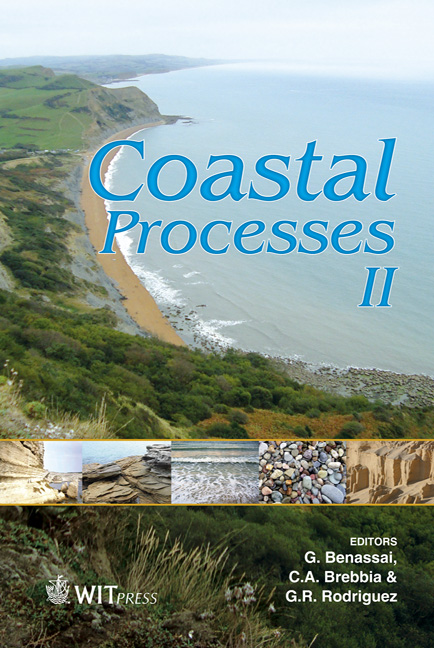Hydrodynamic Forces Acting On An Oscillating Structure
Price
Free (open access)
Transaction
Volume
149
Pages
11
Page Range
321 - 331
Published
2011
Size
794 kb
Paper DOI
10.2495/CP110271
Copyright
WIT Press
Author(s)
D. Mirauda, A. Volpe Plantamura & S. Malavasi
Abstract
The submerged and semi-submerged structures (off-shore platforms, wind farms, floating buildings, marine turbines, oil conduits, buoys) in sea currents are often subjected to strong vibrations that condition the structural stability and also give rise to serious damage to the mechanical parts of the structures, with consequent efficiency loss of the system and above all, repercussions in the environment in which they are located. These vibrations increase when the structures are immersed in bounded flows (presence of the bed and/or the free surface). In order to attenuate and eliminate these problems, analytical and experimental means are used to describe the dynamic behaviour of structures for different flow field configurations and boundary conditions. Recent research has demonstrated that integrated numerical modelling (considering both structure and fluid characteristics) is the more suitable way to value the dynamic response of a system. To check on the reliability of the resolution methods experimental controls are needed that, for the complexity of structures, requires models with simplified geometries (spheres, cylinders, rectangles). In this context, the present work aims to provide some experimental results obtained analyzing both the oscillations and the forces acting on a structure to simple geometry (sphere) characterized by low values of mass and damping and invested by a free surface steady flow. Keywords: sphere, free surface, bed, hydrodynamic forces. 1 Introduction The study of flow-structure interactions is important in many scientific fields as in hydraulics, in civil and environmental engineering, in river, maritime and in
Keywords
sphere, free surface, bed, hydrodynamic forces





